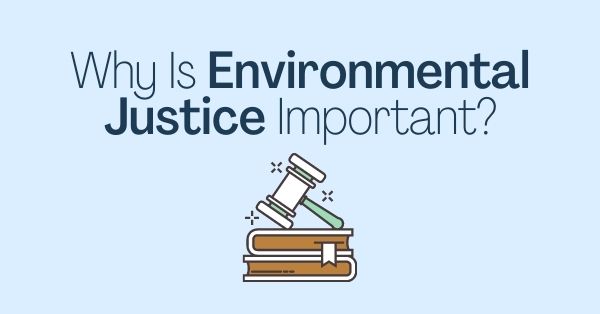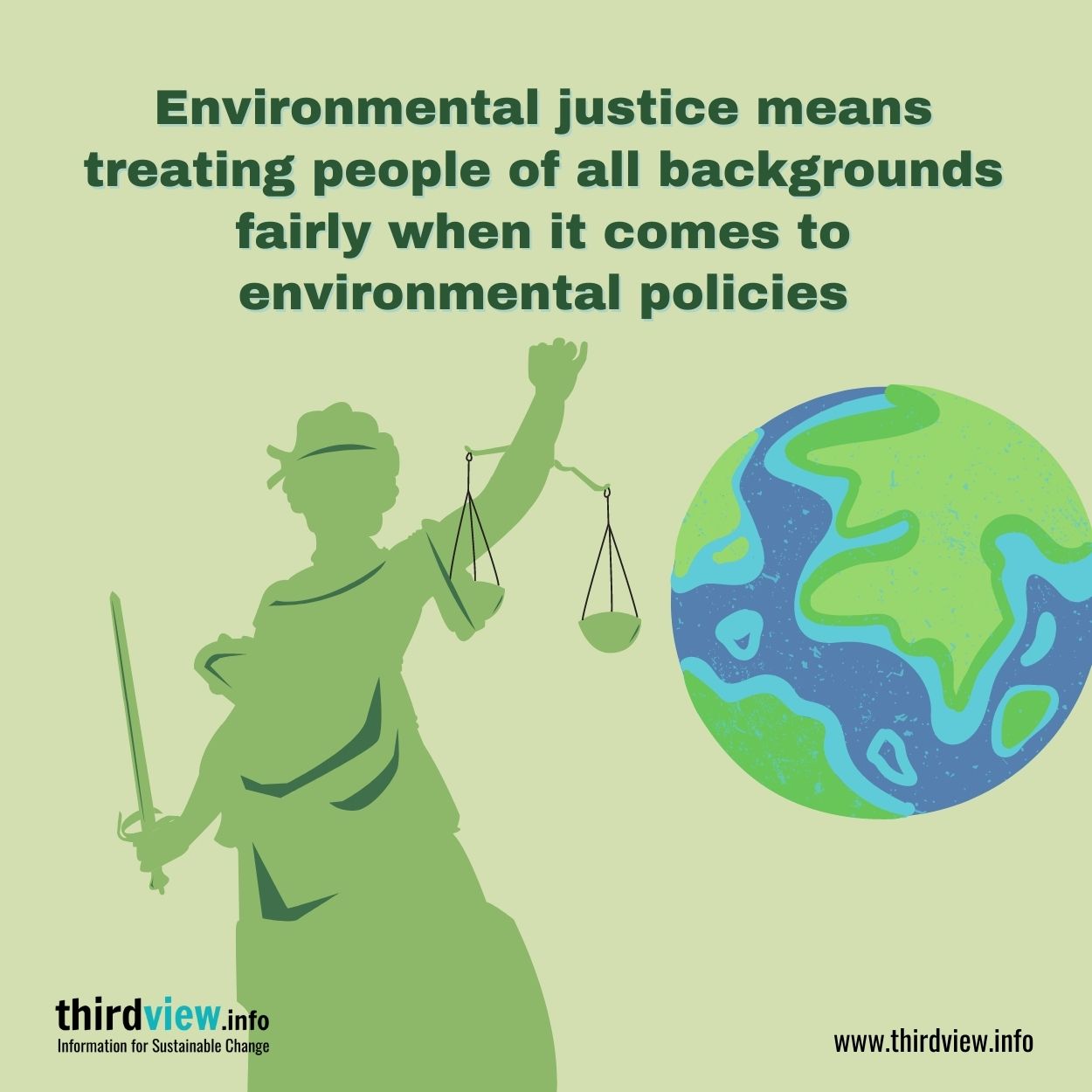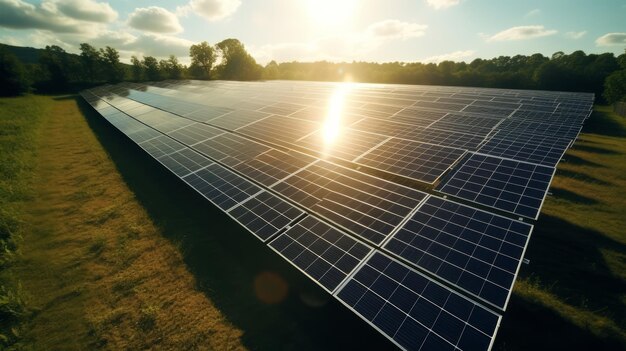
What is Environmental Justice and Why Does It Matter? An Easy Guide
Have you ever noticed that certain neighborhoods, often home to low-income communities or people of color, seem to bear the brunt of pollution and environmental hazards? Perhaps there’s a factory spewing smoke nearby, a busy highway creating noise and exhaust, or a waste dump just down the road. This isn’t a coincidence; it’s a stark reality for millions, and it’s precisely what the concept of Environmental Justice seeks to address.
Environmental Justice is a powerful and crucial movement that demands fairness and equity in how environmental benefits and burdens are distributed. It’s about ensuring that everyone, regardless of their race, income, or background, has the right to live in a healthy and safe environment.
In this comprehensive guide, we’ll break down what Environmental Justice truly means, explore its historical roots, understand why it’s so incredibly important, and look at how we can all contribute to a more just and sustainable future.
What Exactly is Environmental Justice?
At its core, Environmental Justice (often abbreviated as EJ) is the principle that all people deserve equal protection from environmental hazards and equal access to environmental benefits.
Let’s break down that definition:
- Fair Treatment: This means that no group of people should bear a disproportionate share of the negative environmental consequences resulting from industrial, governmental, and commercial operations or the execution of federal, state, local, and tribal programs and policies.
- Meaningful Involvement: This goes beyond just informing communities about decisions. It means that people in affected communities have a real say in the decisions that impact their environment and health. Their concerns must be considered and addressed in the decision-making process.
- Regardless of Race, Color, National Origin, or Income: This highlights the historical and ongoing reality that marginalized communities, particularly communities of color and low-income populations, are disproportionately affected by pollution and lack of access to healthy environments.
- Environmental Hazards and Benefits: It’s not just about avoiding pollution; it’s also about having access to clean air, clean water, green spaces, healthy food, and parks.
In simpler terms, Environmental Justice asks: "Why are some communities consistently exposed to more pollution and less greenery than others?" And then, it works to fix that imbalance.
The Roots of the Movement: A Brief History
The concept of Environmental Justice isn’t new, but the movement gained significant national attention in the United States in the early 1980s. Its origins are deeply intertwined with the Civil Rights Movement.
- Warren County, North Carolina (1982): Often cited as the birthplace of the Environmental Justice movement, this was a pivotal moment. A predominantly Black community in Warren County was chosen as the site for a hazardous waste landfill, despite strong local opposition and the presence of high levels of PCBs (a toxic chemical). Residents, civil rights activists, and environmentalists united in protests and acts of civil disobedience, drawing national attention to the issue of "environmental racism" – the disproportionate siting of environmental hazards in communities of color.
- Early Recognition: While the Warren County protests brought the issue to the forefront, communities of color and low-income communities had been fighting against environmental injustices for decades, often without widespread recognition. Their struggles were frequently framed as local land-use disputes rather than systemic issues of environmental inequality.
- Shift in Perspective: The Warren County protests and subsequent academic studies helped shift the narrative, demonstrating a clear pattern: race and socio-economic status were powerful predictors of who lived near polluting industries and toxic waste sites. This led to the coining of terms like "environmental racism" and solidified the demand for "environmental justice."
- Government Recognition: In 1994, President Bill Clinton signed Executive Order 12898, "Federal Actions to Address Environmental Justice in Minority Populations and Low-Income Populations." This order directed federal agencies to make environmental justice part of their mission by identifying and addressing disproportionately high and adverse human health or environmental effects of their programs, policies, and activities on minority and low-income populations.
Today, the Environmental Justice movement continues to grow, encompassing a wider range of issues, including climate change, food access, and urban planning.
Why Does Environmental Justice Matter So Much?
The importance of Environmental Justice cannot be overstated. It touches upon fundamental human rights, public health, economic equality, and the very fabric of democracy.
Here are the key reasons why Environmental Justice matters:
-
It’s a Matter of Public Health:
- Increased Illnesses: Communities living near polluting facilities experience higher rates of respiratory illnesses (like asthma), heart disease, cancer, birth defects, and other chronic health problems due to exposure to toxic air, contaminated water, and polluted soil.
- Stress and Mental Health: Living in a constantly polluted or hazardous environment also takes a significant toll on mental health, leading to stress, anxiety, and depression.
- Vulnerable Populations: Children, the elderly, and those with pre-existing health conditions are often most susceptible to these impacts.
-
It’s a Matter of Human Rights:
- The right to a healthy environment is increasingly recognized as a fundamental human right. Denying certain communities clean air, water, and safe living conditions is a violation of these basic rights.
- It ensures that everyone has the right to live, learn, work, and play in a healthy environment.
-
It’s About Social and Economic Equity:
- Perpetuates Poverty: Environmental burdens often trap communities in cycles of poverty. Property values decrease, health costs rise, and quality of life diminishes, making it harder for residents to build wealth or attract investment.
- Limited Opportunities: A polluted environment can limit economic opportunities, as businesses may be less likely to invest in areas perceived as unhealthy or undesirable.
- Reinforces Inequality: It reinforces existing social and economic inequalities, making it harder for marginalized communities to thrive.
-
It Promotes Democracy and Participation:
- Empowering Communities: EJ demands that affected communities have a voice in decisions that impact their lives. This fosters democratic participation and ensures that solutions are community-driven and culturally appropriate.
- Accountability: It holds corporations and governments accountable for their actions and ensures that they consider the well-being of all citizens, not just the powerful.
-
It’s Crucial for Climate Justice:
- Disproportionate Impact: Low-income communities and communities of color, who have contributed the least to climate change, are often the first and worst hit by its impacts (e.g., extreme weather, heat waves, flooding, food insecurity).
- Vulnerability: These communities often lack the resources to adapt to or recover from climate-related disasters.
- Fair Transition: Climate justice demands that solutions to climate change do not further burden these communities but instead offer equitable benefits, such as green jobs and renewable energy access.
-
It Builds Stronger, Healthier Communities:
- By addressing environmental injustices, communities can transform from places of struggle to vibrant, resilient spaces where residents can thrive physically, mentally, and economically.
- It fosters community cohesion and collective action.
Who is Affected by Environmental Injustice?
While environmental hazards can affect anyone, the burden is demonstrably not shared equally. Environmental injustice disproportionately impacts:
- Low-Income Communities: Due to economic pressures, these communities may live in areas with cheaper land, which are often industrial zones or near polluting facilities. They may also lack the resources or political power to fight against the siting of such facilities.
- Communities of Color: This includes Black, Indigenous, Latinx, and Asian American communities, who, due to historical segregation, discriminatory housing policies (like redlining), and systemic racism, are often concentrated in areas near sources of pollution. This is why the term "environmental racism" is so critical.
- Indigenous Communities: Many Indigenous communities face unique challenges, including the contamination of ancestral lands and sacred sites by mining, oil and gas extraction, and other industrial activities. Their traditional ways of life, which are deeply connected to the land and water, are severely impacted.
- Migrant and Farmworker Communities: These communities often work in hazardous agricultural environments, exposed to pesticides and extreme weather, and live in substandard housing with limited access to clean water and healthcare.
- Children and the Elderly: These demographic groups are often more vulnerable to environmental toxins due to their developing bodies or weakened immune systems.
- Rural vs. Urban: While urban areas might have more industrial pollution, rural areas can face issues like large-scale agricultural pollution (pesticides, animal waste) or the siting of landfills and industrial farms.
Common Examples of Environmental Injustice in Action
To make the concept more concrete, here are some common scenarios that exemplify environmental injustice:
- Siting of "NIMBY" Facilities: "Not In My Backyard" (NIMBY) refers to undesirable facilities like landfills, incinerators, power plants, chemical factories, or wastewater treatment plants. These are overwhelmingly sited in low-income communities and communities of color, rather than affluent, predominantly white neighborhoods.
- Air Pollution "Hot Spots": Neighborhoods adjacent to major highways, ports, or industrial areas experience higher concentrations of vehicle exhaust, industrial emissions, and fine particulate matter, leading to higher rates of asthma and other respiratory illnesses.
- Water Contamination: Communities reliant on contaminated water sources due to industrial runoff, agricultural pollution, or failing infrastructure (like lead pipes in Flint, Michigan) often lack the resources to access clean alternatives.
- Lack of Green Spaces and Parks: Disadvantaged neighborhoods often have fewer parks, trees, and green spaces, which are crucial for physical activity, mental well-being, and mitigating urban heat island effects.
- "Food Deserts": Areas with limited access to affordable, nutritious food (fresh fruits, vegetables, whole grains) often coincide with environmentally burdened communities, forcing residents to rely on unhealthy processed foods.
- Exposure to Lead and Asbestos: Older housing stock, often found in lower-income areas, may contain lead paint or asbestos, posing significant health risks.
- Climate Change Impacts: Coastal low-income communities are more vulnerable to sea-level rise and storm surges. Urban heat islands disproportionately affect low-income neighborhoods with less green space and more concrete.
Moving Towards Environmental Justice: Solutions and Actions
Achieving environmental justice requires a multi-faceted approach involving policy changes, community empowerment, corporate responsibility, and individual action. It’s a long-term commitment, but progress is being made.
Here’s what can be done:
-
Strengthened Policies and Regulations:
- Proactive Planning: Implementing zoning laws and land-use planning that prevent the disproportionate siting of polluting facilities in vulnerable communities.
- Cumulative Impact Assessment: Requiring that the cumulative health impacts of multiple polluting facilities in an area are considered, not just the impact of one new facility in isolation.
- Stronger Enforcement: Rigorously enforcing environmental laws and holding polluters accountable, with significant penalties.
- "Polluter Pays" Principles: Ensuring that those who cause pollution bear the costs of cleanup and harm.
-
Community Organizing and Advocacy:
- Empowering Local Voices: Supporting and amplifying the voices of affected communities, who are often the best experts on their own environmental challenges.
- Grassroots Movements: Continuing to build powerful grassroots movements that demand change from local to national levels.
- Legal Action: Utilizing legal avenues to challenge discriminatory practices and hold polluters accountable.
-
Corporate Responsibility:
- Ethical Siting: Companies choosing to locate their facilities in areas that do not disproportionately burden specific communities.
- Sustainable Practices: Adopting cleaner production methods, reducing waste, and investing in renewable energy.
- Transparency: Being transparent about emissions, waste, and environmental impact.
-
Investing in Affected Communities:
- Infrastructure Improvements: Upgrading water systems, improving public transportation, and investing in green infrastructure.
- Access to Resources: Ensuring access to healthy food, green spaces, and quality healthcare.
- Economic Development: Creating green jobs and economic opportunities that benefit local residents.
-
Education and Awareness:
- Raising Public Understanding: Educating the broader public about environmental justice issues helps build support for policy changes and encourages empathy.
- Empowering Communities with Information: Providing accessible information about environmental risks and their rights to affected communities.
-
Individual Actions:
- Stay Informed: Learn about environmental justice issues in your own community and beyond.
- Support EJ Organizations: Donate time or money to organizations working on the front lines of environmental justice.
- Vote: Elect representatives who prioritize environmental protection and social equity.
- Advocate: Speak up, write letters, or participate in peaceful protests.
- Consume Consciously: Support businesses that demonstrate a commitment to ethical and sustainable practices.
Conclusion: A Path Towards a Just and Healthy Future
Environmental Justice is not just an environmental issue; it is a fundamental human rights issue, a public health crisis, and a matter of social and economic equity. It recognizes that environmental problems are often symptoms of deeper systemic inequalities and historical injustices.
By understanding what Environmental Justice is and why it matters, we take the first step towards building a world where the color of your skin or the size of your bank account doesn’t determine the quality of the air you breathe or the water you drink. It’s about creating a future where every community can thrive, free from the burden of pollution, and with equal access to a healthy, sustainable environment. The fight for environmental justice is a fight for a more equitable, healthy, and truly just society for all.
Frequently Asked Questions (FAQs) About Environmental Justice
Q1: What is the main difference between "Environmental Justice" and "Environmentalism"?
A1: Environmentalism broadly focuses on protecting the natural world (e.g., conservation, pollution reduction). Environmental Justice focuses specifically on the fair distribution of environmental benefits and burdens, highlighting how environmental issues disproportionately affect marginalized communities and advocating for their rights and involvement. EJ emphasizes the human and social equity aspects of environmental protection.
Q2: Is "Environmental Racism" the same as "Environmental Justice"?
A2: "Environmental Racism" is a specific form of environmental injustice that refers to the disproportionate impact of environmental hazards on communities of color. It’s a key component and driving force behind the broader Environmental Justice movement, which seeks justice for all marginalized groups, including low-income communities of all races.
Q3: How does climate change relate to Environmental Justice?
A3: Climate change is a major Environmental Justice issue because the communities most vulnerable to its impacts (like extreme weather, rising sea levels, and heatwaves) are often the same low-income communities and communities of color who have contributed the least to global warming. Climate Justice is the part of the EJ movement that addresses these disproportionate impacts and advocates for equitable climate solutions.
Q4: Can Environmental Justice issues affect rural areas, or are they mostly urban?
A4: Environmental Justice issues can affect both urban and rural areas. While urban areas might see more industrial pollution and traffic, rural areas can be impacted by large-scale agricultural pollution (pesticides, animal waste from factory farms), mining operations, or the siting of landfills and incinerators.
Q5: What can I do to support Environmental Justice?
A5: You can start by educating yourself further, supporting local or national Environmental Justice organizations (like the NAACP Environmental and Climate Justice Program, Environmental Justice Foundation, or local community groups), advocating for stronger environmental policies, participating in local decision-making processes, and making conscious choices in your consumption and lifestyle.



Post Comment